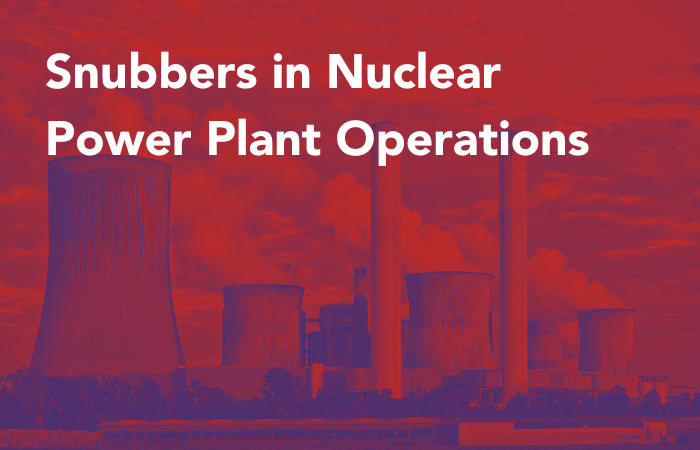Mechanical and hydraulic snubbers are critical safety components in nuclear power plants, designed to protect against seismic events and ensure the stable operation of essential equipment. Their reliable performance and adherence to regulatory standards are vital for the safe and efficient operation of nuclear facilities worldwide.
What are Snubbers?
Snubbers are specialized devices designed to absorb shock and vibration, to protect critical equipment from sudden movements and ensure operational safety. Think of snubbers as car seat belts, and your body as the critical piece of equipment. With a seat belt on, you can slowly and easily move your body forward and side-to-side without rigid restraint. However, when a sudden and strong force is applied to the car due to a collision, the seatbelt will restrain your body from accelerating and sustaining damage

Much like car seatbelts, mechanical snubbers are devices that utilize friction to absorb and dissipate energy from sudden movements. They consist of a piston enclosed in a cylinder filled with a viscous fluid, such as silicone oil, which resists motion when subjected to sudden accelerations. When absorbing energy the friction between the piston and cylinder converts kinetic energy into thermal energy, allowing the heat to dissipate harmlessly.

Image: Examples of mechanical and hydraulic snubbers
Hydraulic snubbers are similar in purpose and functionality, but they include a piston, cylinder, and hydraulic fluid that push through the valves to control movement and absorb energy. When reducing motion the piston forces hydraulic fluid through the valves, which restrict the flow and thus, the motion of the piston.
Snubbers at Nuclear Power Plants
In nuclear power plants, mechanical snubbers are preferred in irradiated environments and are installed at critical points where equipment must withstand potential seismic disturbances or vibrations. They are commonly found supporting components such as steam generators, reactor coolant pumps, and piping systems. On the other hand, hydraulic snubbers are commonly used outdoors in the same nuclear power plants. Hyrdaulic snubbers have less internmal components than muchanical snubbers, so they can better withstand natural outdoor environments

Image: Nuclear Power Plant where mechanical and/or hydraulic snubbers are used.
United States NRC Requirements
The U.S. Nuclear Regulatory Commission (NRC) sets stringent requirements for the design, installation, and maintenance of mechanical and hydraulic snubbers in nuclear power plants. These requirements ensure that snubbers are capable of withstanding specified seismic forces and is essential for nuclear plants to operate safely and maintain public confidence in the safety of nuclear energy.
The parameters and specific requirements are determined by the plant's specific Licensing Basis Guide (LGS) and safety analysis, which are approved by the NRC. When inspecting snubbers in a nuclear facility, inspectors look for physical damage like cracks or deformities, check for corrosion and excessive wear, inspect for signs of leakage. Aside from obvious physical damage, inspectors verify smooth operation, confirm proper alignment and installation, and review maintenance records. These inspections ensure snubbers are in good condition to absorb shocks and vibrations effectively during normal operations and potential hazards.
Innovation Under Pressure
While performing these inspections is a crucial aspect of maintaining the safety and reliability of the facility's piping systems, these snubbers can be located in tight or difficult to access spaces. Inspections may require ladders, lifts or scaffolding, creating a time consuming, costly, and unsafe work space. Extendable cameras like the XtendaCam HD AIR are lightweight remote visual inspection tools that eliminate the need for extensive inspection preparation.
These cameras provide clear, detailed images, allowing inspectors to assess the condition of the snubbers components and structural integrity from the ground. This method enhances safety by minimizing personnel exposure to hazards and radiation, while also optimizing operational efficiency by reducing downtime. Furthermore, the XtendaCam HD AIR promotes detailed documentation and easy file sharing to ensure regulatory compliance.

Image: XtendaCam HD AIR
Similarly, the Xtenda-Grab Telescopic Pole Retrieval Tool for Snubber Inspection is an innovative custom engineered by InterTest to provide a more in depth evaluation of snubbers from the ground. This device allows the inspector to reach and grab the snubber with up to 50lbs of force from the ground.

Image: Xtenda-Grab Telescopic Pole Retrieval Tool
To learn more about InterTest's custom engineering capabilities or to speak with an experienced sales representative about the best remote visual inspection solution for your application, contact us today.

